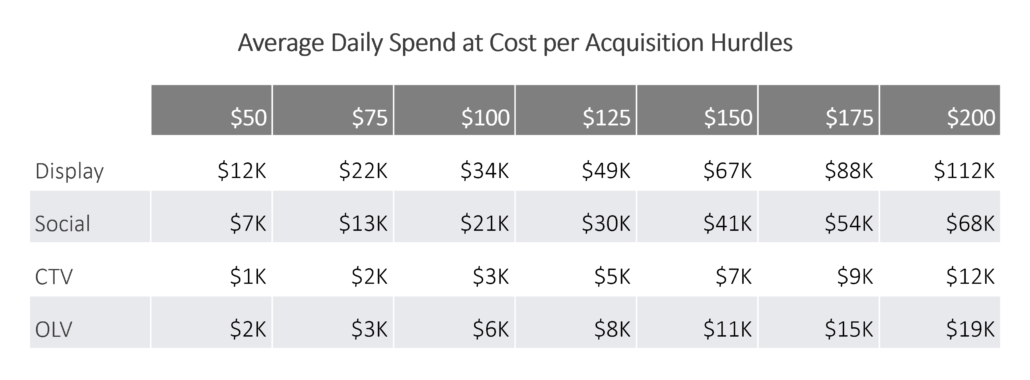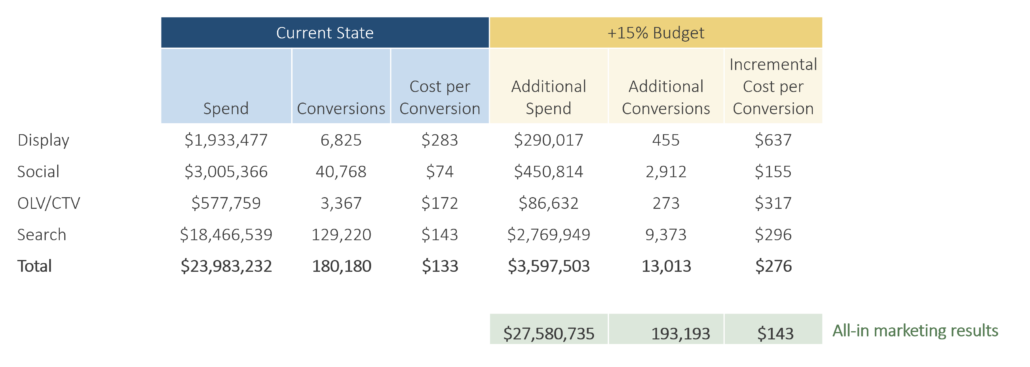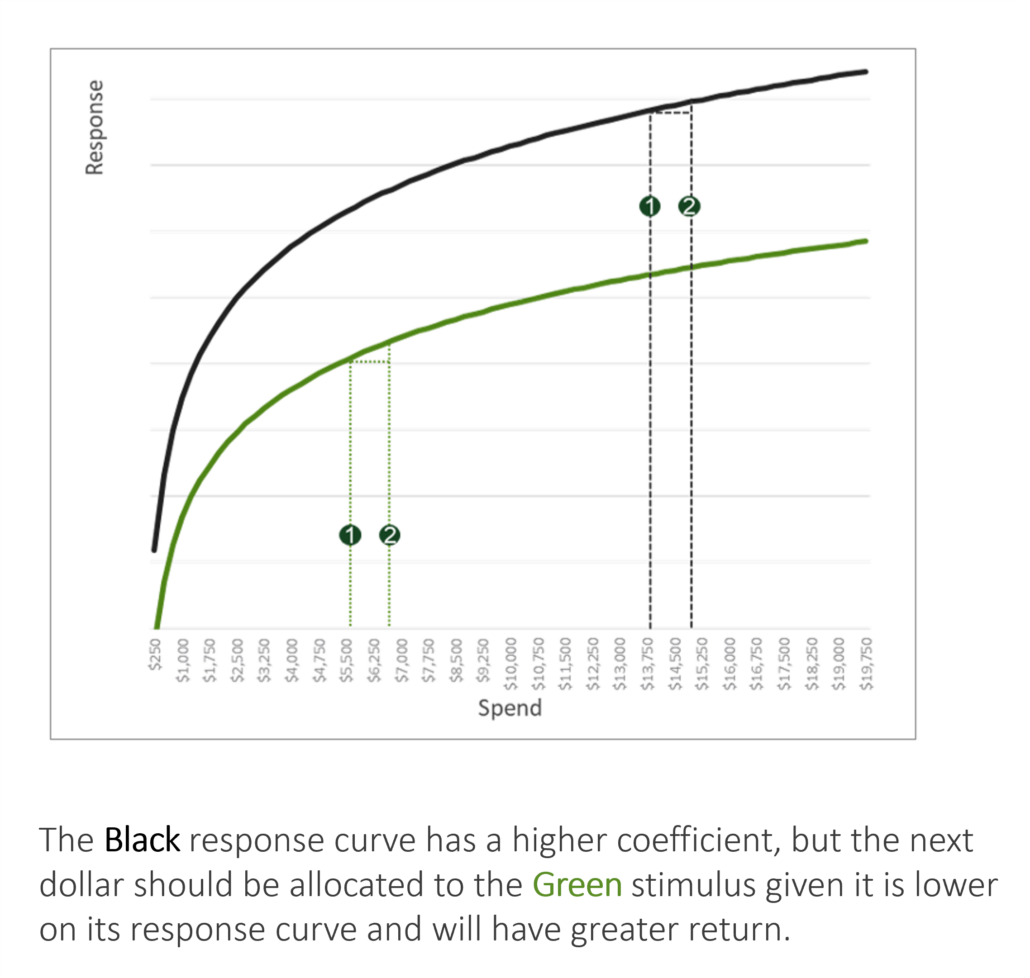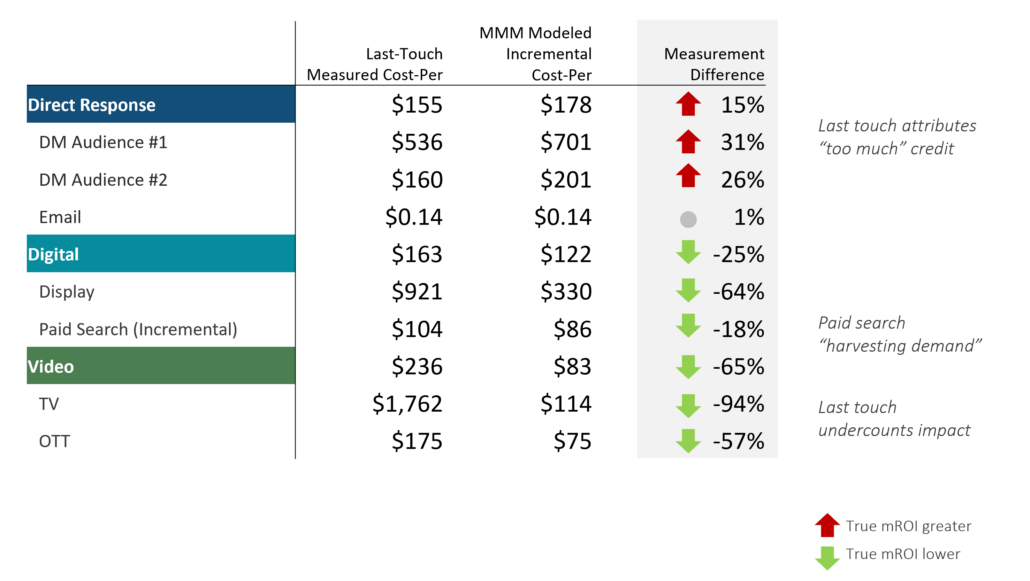4 Situations When Marketing Effectiveness Measurement Is Especially Helpful
Every organization should have marketing effectiveness measurement tools at its disposal. Marketers can’t optimize on last-touch attribution alone, and educating internal stakeholders on how marketing channels work together has long-term benefits.
We’ve outlined four situations when marketing effectiveness tools, such as MMM and MTA, can be particularly helpful.
- Finance-led Organizations
- Diminishing Demand Environments
- Tightening Budget Environments
- Challenging Brand Environments
1. Finance-led Organizations
When the focus is on expense control, lean staffing models, and profitable revenue growth, marketing is frequently viewed as a cost center. CFOs often push marketers to employ media channels with the lowest cost per acquisition (typically demand capture channels such as paid search and affiliate), which may have a negative long-term impact. MMM and MTA can help finance-led organizations understand what portion of sales are driven by marketing without the risk of overattributing to paid search and affiliates.
Additionally, aligning on marketing-driven cost per acquisition can support (or start) conversations around the level of investment needed to generate additional sales to hit targets.
If finance sets a cost-per-acquisition limit at $100, Display could support an average of $34K daily spend, while CTV could only support an average of $3K.
Or, looking at it another way, if the budget increased by 15%, how many more sales would convert, and how would the overall cost per acquisition change?
Finance may be persuaded that the additional $3.6M in budget is worthwhile to generate an additional 13,000 sales.
2. Diminishing Demand Environments
When an organization has over-rotated toward lower funnel activities, sales demand decreases over time, and cost-pers increase. Marketing effectiveness measurement can help identify opportunities to increase upper funnel spend (to generate demand) through response curves. Response curves show where the next dollar should be allocated to maximize return and when a media will see less return on additional spend.
Once marketing decides to shift investment up the funnel, MMM and MTA can validate that this was the correct move, help track cost-pers by channel over time, and refresh spend curves at higher (or lower) levels to continue to optimize spend.
3. Tightening Budget Environments
No organization has an unlimited budget, and marketers often default to last-touch attribution to determine where to cut when budgets are reduced. Unfortunately, this is short-sighted; last touch significantly underweights less trackable activities, such as TV, online video, and other awareness marketing.
Looking only at last touch in the above example, one would likely cut TV spend. However, the actual marketing ROI of TV is significantly better than what can be measured with last touch. Marketing effectiveness measurement helps make marketers smarter with more information about the performance of marketing channels.
4. Challenging Brand Environments
When organizations are struggling with brand—such as a PR incident, long-run customer service issues, a popular new category entrant, or lack of brand awareness activities—it can be challenging to stay the course on brand spend. Brand-building activities take a long time to pay off, and organizational stakeholders (finance or the board, for example) may want to see proof that investments are working.
MMM can measure the impact of marketing on brand health and, consequently, brand health’s impact on sales. While moving brand metrics significantly takes a long time, modeling can confirm and quantify the link between brand health and sales.
An equation on “responsiveness” and “stickiness” can quantify how much brand spend is required to move the brand metric. “Responsiveness” measures how the brand metric responds to marketing (i.e., how quickly marketing can move the metric). “Stickiness” measures how long the change marketing drove lasts (i.e., how quickly the metric returns to previous levels).
Combining these two elements quantifies how much spend is required to improve a particular brand metric and how long that change will last. Example: One week of $1M brand spend will yield a cumulative increase of 1.7 percentage points in Awareness over eight weeks.
Looking at historical sales performance during periods when brand metrics were higher helps quantify the sales impact of increasing a brand metric calculated in the formula above.
Together, these can help stakeholders outside of marketing understand the sales impact of these activities over a shorter period and buy marketing time for the flywheel of long-run brand improvement to take effect.
Conclusion
Usually, we are brought in when things aren’t going well, and frequently, the issue is one of the four situations covered above. All organizations could benefit from a more holistic approach to marketing measurement, though.
Access our framework, “Measuring the Impact of Brand Marketing on Business Growth”
For a comprehensive exploration of brand marketing’s impact and our multi-stage modeling approach, access our framework.










 Ari Lamstein (https://arilamstein.com/wp-content/uploads/2023/04/Screenshot-2023-04-19-at-9.20.02-AM.png)
Ari Lamstein (https://arilamstein.com/wp-content/uploads/2023/04/Screenshot-2023-04-19-at-9.20.02-AM.png)